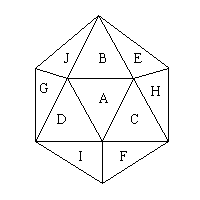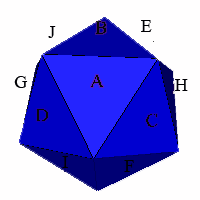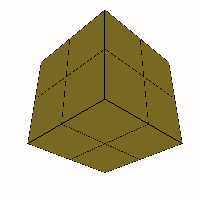The Rhombic Enneacontahedron and relations (original) (raw)
The Rhombic Enneacontahedron and relations
The above 90 sided figure is the rhombic enneacontahedron. It consists of sixty fat rhombi ('R') (gold coloured) as found in the rhombic dodecahedron and thirty thin rhombi ('r') (bronze coloured) as found in the medial rhombic triacontahedron. It is a zonohedron, and is also referred to as a zonohedrified dodecahedron. It can only be formed from these particular rhombi, a quality I refer to as being rhombo-static.
The centre figure is a rhombo-flexible triacontahedron.
There is a isomorph to the rhombic enneacontahedron: the great rhombic enneacontahedron, shown above right.
Partial zonohedrifications of the dodecahedron
As a zonohedron bands of parallel edges can be removed from the polyhedron leaving a remnant polyhedron which is also normally rhombo-static, although there are some exceptions.
To define partial zonohedrifications of the dodecahedron it is useful to label the 10 axes of the dodecahedron as A through J. As an axis of the dodecahedron is equivalent to two opposite faces of an icosahedron, these axes are best shown on an icosahedron as follows:
In total there are 210 possible combinations of axes. Any selection of just one axis leads to a line segment. There are two distinct ways to select two axes, those relating to edge connected triangles (eg AB) and those related to vertex connected triangles (eg BC). These selections lead to a thin ('r') rhombus and a fat ('R') rhombus respectively. For three or more axes the figures are given below. All possible selections of axes are equivalent to one of the selections below as is shown in tabular form here.
The selected axes are shown on the icosahedron next to each figure, note that in most cases this icosahedron has been rotated to show the symmetry of the polyhedron. Note also that all cases including those where the symmetry is given as 'none' are symmetric through central inversion.
In 1970 Steve Baer described a dissection of the rhombic enneacontahedron into 120 parallelepiped blocks [1] . The blocks are in five forms, denoted_A B C D_and E(my italics). These are equivalent to the 3 axes cases below. The reference to Baer gives the number of Baer Cells required to construct the polyhedron in the form (A,B,C,D,E). The data was generated by David Koski and is included here with his permission. George Hart has an interesting page on dissections of rhombohedra which includes discussion of the rhombic enneacontahedron.
David Koskihas also discovered the interesting facts that hold true for all the polyhedra below:
If axes = n then:
- Surface Faces = (n)*(**n**-1)
- Total Faces = (n)*(**n-1)*(n**-2)
- Ratio of surface faces to total faces = 1/(**n**-2)
10 Axes
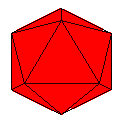 Axes: ABCDEFGHIJ Symmetry: icosahedral Rhombi: (R,r) = (60,30) Baer: (10,20,30,30,30) Axes: ABCDEFGHIJ Symmetry: icosahedral Rhombi: (R,r) = (60,30) Baer: (10,20,30,30,30) |
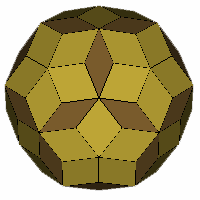 VRML, OFF VRML, OFF |
|---|
9 Axes
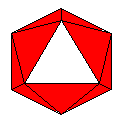 Axes: ABCDEFGHI Symmetry: 3-fold dihedral Rhombi: (R,r) = (48,24) Compliment: A Baer: (7,14,21,21,21) Axes: ABCDEFGHI Symmetry: 3-fold dihedral Rhombi: (R,r) = (48,24) Compliment: A Baer: (7,14,21,21,21) |
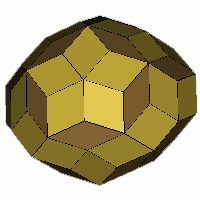 VRML, OFF VRML, OFF |
|---|
8 Axes
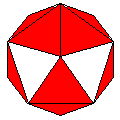 Axes: ABCDEFGH Symmetry: 2-fold pyramidical Rhombi: (R,r) = (38,18) Compliment: BC Baer: (5,10,14,13,14) Axes: ABCDEFGH Symmetry: 2-fold pyramidical Rhombi: (R,r) = (38,18) Compliment: BC Baer: (5,10,14,13,14) 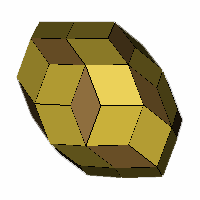 VRML, OFF VRML, OFF |
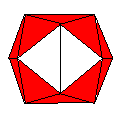 Axes: ABCDEFHI Symmetry: 2-fold dihedral Rhombi: (R,r) = (36,20) Compliment: AB Baer: (4,8,14,16,14) Axes: ABCDEFHI Symmetry: 2-fold dihedral Rhombi: (R,r) = (36,20) Compliment: AB Baer: (4,8,14,16,14) 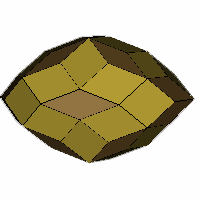 VRML, OFF VRML, OFF |
|---|
7 Axes
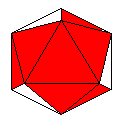 Axes: ABCDEFG Symmetry: 3-fold pyramidical Rhombi: (R,r) = (30,12) Compliment: CDE Baer: (4,7,9,6,9) Axes: ABCDEFG Symmetry: 3-fold pyramidical Rhombi: (R,r) = (30,12) Compliment: CDE Baer: (4,7,9,6,9) 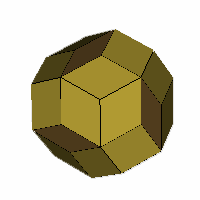 VRML, OFF VRML, OFF |
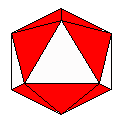 Axes: ABCDEFH Symmetry: 2-fold pyramidical Rhombi: (R,r) = (28,14) Compliment: ADE Baer: (3,6,9,9,8) Axes: ABCDEFH Symmetry: 2-fold pyramidical Rhombi: (R,r) = (28,14) Compliment: ADE Baer: (3,6,9,9,8) 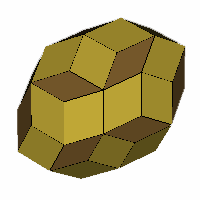 VRML, OFF VRML, OFF |
|---|---|
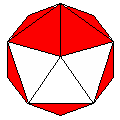 Axes: ABCDEGH Symmetry: 2-fold pyramidical Rhombi: (R,r) = (26,16) Compliment: ABC Baer: (2,4,9,11,9) Axes: ABCDEGH Symmetry: 2-fold pyramidical Rhombi: (R,r) = (26,16) Compliment: ABC Baer: (2,4,9,11,9) 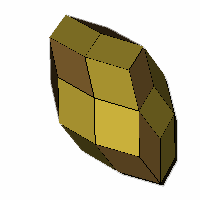 VRML, OFF VRML, OFF |
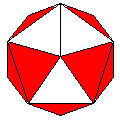 Axes: ABCDFGH Symmetry: 2-fold pyramidical Rhombi: (R,r) = (28,14) Compliment: ACE Baer: (3,6,8,9,9) Axes: ABCDFGH Symmetry: 2-fold pyramidical Rhombi: (R,r) = (28,14) Compliment: ACE Baer: (3,6,8,9,9) 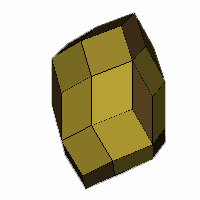 VRML, OFF VRML, OFF |
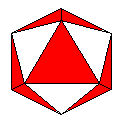 Axes: ABDEFGH Symmetry: 3-fold dihedral Rhombi: (R,r) = (30,12) Compliment: BCD Baer: (3,8,9,6,9) Axes: ABDEFGH Symmetry: 3-fold dihedral Rhombi: (R,r) = (30,12) Compliment: BCD Baer: (3,8,9,6,9) 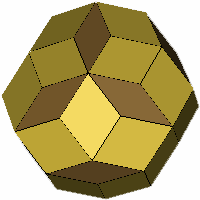 VRML, OFF VRML, OFF |
6 Axes
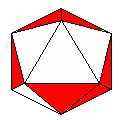 Axes: ABCDEF Symmetry: None* Rhombi: (R,r) = (20,10) Compliment: ACDE Baer: (2,3,5,5,5) Axes: ABCDEF Symmetry: None* Rhombi: (R,r) = (20,10) Compliment: ACDE Baer: (2,3,5,5,5) 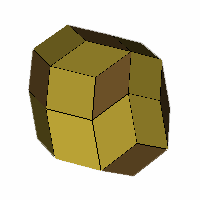 VRML, OFF VRML, OFF |
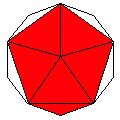 Axes: ABCDEH Symmetry: 2-fold pyramidical Rhombi: (R,r) = (18,12) Compliment: ABDE Baer: (1,2,6,7,4) Axes: ABCDEH Symmetry: 2-fold pyramidical Rhombi: (R,r) = (18,12) Compliment: ABDE Baer: (1,2,6,7,4) 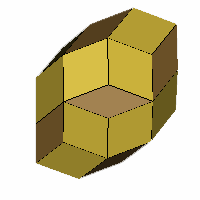 VRML, OFF VRML, OFF |
|---|---|
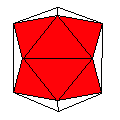 Axes: ABCDFH Symmetry: 2-fold dihedral Rhombi: (R,r) = (20,10) Compliment: BCEF Baer: (2,4,4,6,4) Axes: ABCDFH Symmetry: 2-fold dihedral Rhombi: (R,r) = (20,10) Compliment: BCEF Baer: (2,4,4,6,4) 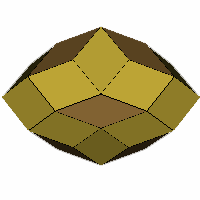 VRML, OFF VRML, OFF |
 Axes: ABCDGH Symmetry: 2-fold pyramidical Rhombi: (R,r) = (18,12) Compliment: ABCE Baer: (1,2,4,7,6) Axes: ABCDGH Symmetry: 2-fold pyramidical Rhombi: (R,r) = (18,12) Compliment: ABCE Baer: (1,2,4,7,6) 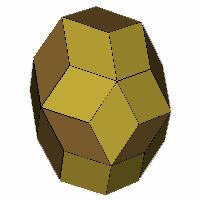 VRML, OFF VRML, OFF |
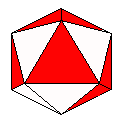 Axes: ABCEFG Symmetry: None* Rhombi: (R,r) = (22,8) Compliment: BCDE Baer: (2,5,5,3,5) Axes: ABCEFG Symmetry: None* Rhombi: (R,r) = (22,8) Compliment: BCDE Baer: (2,5,5,3,5) 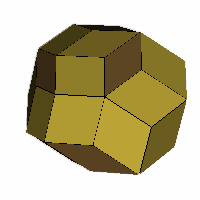 VRML, OFF VRML, OFF |
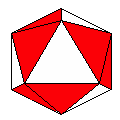 Axes: BCDEFG Symmetry: Tetrahedral Rhombi: (R,r) = (24,6) Compliment: AEFG Baer: (4,4,6,0,6) Rhombo-flexible Axes: BCDEFG Symmetry: Tetrahedral Rhombi: (R,r) = (24,6) Compliment: AEFG Baer: (4,4,6,0,6) Rhombo-flexible 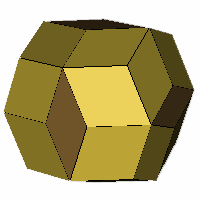 VRML, OFF VRML, OFF |
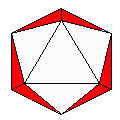 Axes: ABDEGH Symmetry: 3-fold dihedral Rhombi: (R,r) = (18,12) Compliment: ABCD Baer: (0,2,6,6,6) Axes: ABDEGH Symmetry: 3-fold dihedral Rhombi: (R,r) = (18,12) Compliment: ABCD Baer: (0,2,6,6,6) 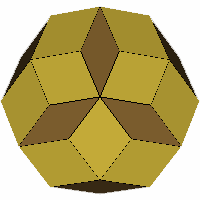 VRML, OFF VRML, OFF |
5 Axes
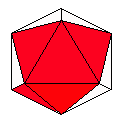 Axes: ABCDE Symmetry: None* Rhombi: (R,r) = (12,8) Compliment: ABCEF Baer: (1,1,2,4,2) Axes: ABCDE Symmetry: None* Rhombi: (R,r) = (12,8) Compliment: ABCEF Baer: (1,1,2,4,2) 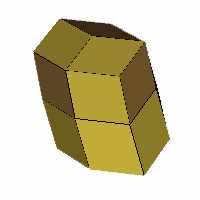 VRML, OFF VRML, OFF |
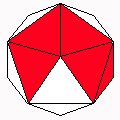 Axes: ABCEF Symmetry: None* Rhombi: (R,r) = (12,8) Compliment: ABCDE Baer: (0,1,3,3,3) Axes: ABCEF Symmetry: None* Rhombi: (R,r) = (12,8) Compliment: ABCDE Baer: (0,1,3,3,3) 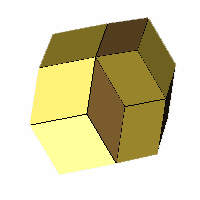 VRML, OFF VRML, OFF |
|---|---|
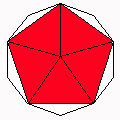 Axes: ABCEH Symmetry: 5-fold dihedral Rhombi: (R,r) = (10,10) Compliment: ACDGH Baer: (0,0,5,5,0) Axes: ABCEH Symmetry: 5-fold dihedral Rhombi: (R,r) = (10,10) Compliment: ACDGH Baer: (0,0,5,5,0) 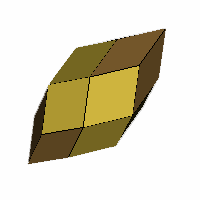 VRML, OFF VRML, OFF |
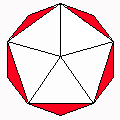 Axes: ACDGH Symmetry: 5-fold dihedral Rhombi: (R,r) = (10,10) Compliment: ACDEF Baer: (0,0,0,5,5) Axes: ACDGH Symmetry: 5-fold dihedral Rhombi: (R,r) = (10,10) Compliment: ACDEF Baer: (0,0,0,5,5) 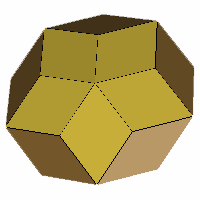 VRML, OFF VRML, OFF |
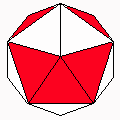 Axes: ABEFG Symmetry: 2-fold pyramidical Rhombi: (R,r) = (16,4) Compliment: BCDEF Baer: (1,4,2,1,2) Axes: ABEFG Symmetry: 2-fold pyramidical Rhombi: (R,r) = (16,4) Compliment: BCDEF Baer: (1,4,2,1,2) 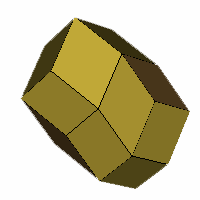 VRML, OFF VRML, OFF |
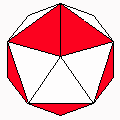 Axes: BCDEF Symmetry: 2-fold pyramidical Rhombi: (R,r) = (16,4) Compliment: ABDEF Baer: (2,2,3,0,3) Rhombo-flexible Axes: BCDEF Symmetry: 2-fold pyramidical Rhombi: (R,r) = (16,4) Compliment: ABDEF Baer: (2,2,3,0,3) Rhombo-flexible 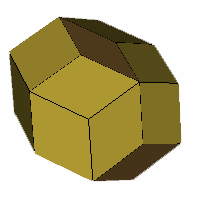 VRML, OFF VRML, OFF |
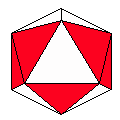 Axes: ABDEF Symmetry: 2-fold pyramidical Rhombi: (R,r) = (14,6) Compliment: ABDEF Baer: (1,2,2,2,3) Axes: ABDEF Symmetry: 2-fold pyramidical Rhombi: (R,r) = (14,6) Compliment: ABDEF Baer: (1,2,2,2,3) 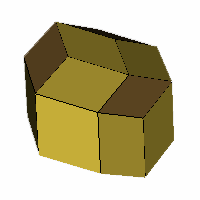 VRML, OFF VRML, OFF |
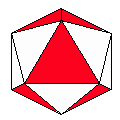 Axes: ACDEF Symmetry: 2-fold pyramidical Rhombi: (R,r) = (14,6) Compliment: ABEFG Baer: (1,2,3,2,2) Axes: ACDEF Symmetry: 2-fold pyramidical Rhombi: (R,r) = (14,6) Compliment: ABEFG Baer: (1,2,3,2,2) 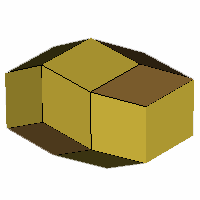 VRML, OFF VRML, OFF |
4 Axes
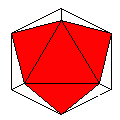 Axes: ABCD Symmetry: 3-fold dihedral Rhombi: (R,r) = (6,6) Compliment: ABDEGH Baer: (1,0,0,3,0) Axes: ABCD Symmetry: 3-fold dihedral Rhombi: (R,r) = (6,6) Compliment: ABDEGH Baer: (1,0,0,3,0) 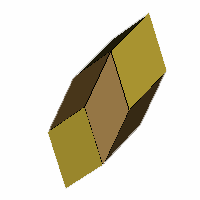 VRML, OFF VRML, OFF |
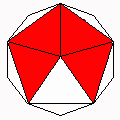 Axes: ABCE Symmetry: 2-fold pyramidical Rhombi: (R,r) = (6,6) Compliment: ABCDGH Baer: (0,0,2,2,0) Axes: ABCE Symmetry: 2-fold pyramidical Rhombi: (R,r) = (6,6) Compliment: ABCDGH Baer: (0,0,2,2,0) 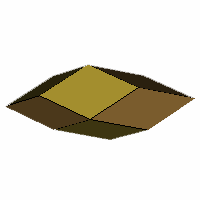 VRML, OFF VRML, OFF |
|---|---|
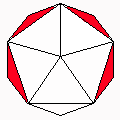 Axes: ABDE Symmetry: 2-fold pyramidical Rhombi: (R,r) = (6,6) Compliment: ABCDEH Baer: (0,0,0,2,2) Axes: ABDE Symmetry: 2-fold pyramidical Rhombi: (R,r) = (6,6) Compliment: ABCDEH Baer: (0,0,0,2,2) 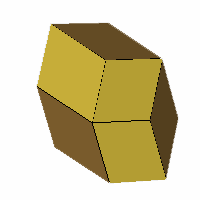 VRML, OFF VRML, OFF |
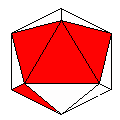 Axes: ACDE Symmetry: None* Rhombi: (R,r) = (8,4) Compliment: ABCDEF Baer: (0,1,1,1,1) Axes: ACDE Symmetry: None* Rhombi: (R,r) = (8,4) Compliment: ABCDEF Baer: (0,1,1,1,1) 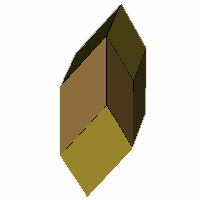 VRML, OFF VRML, OFF |
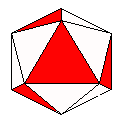 Axes: AEFG Symmetry: Octahedral Rhombi: (R,r) = (12,0) Compliment: BCDEFG Baer: (0,4,0,0,0) Axes: AEFG Symmetry: Octahedral Rhombi: (R,r) = (12,0) Compliment: BCDEFG Baer: (0,4,0,0,0) 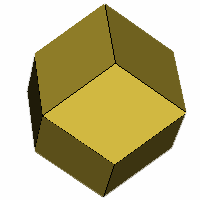 VRML, OFF VRML, OFF |
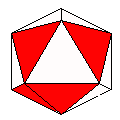 Axes: BCDE Symmetry: None* Rhombi: (R,r) = (10,2) Compliment: ABCEFG Baer: (1,1,1,0,1) Axes: BCDE Symmetry: None* Rhombi: (R,r) = (10,2) Compliment: ABCEFG Baer: (1,1,1,0,1) 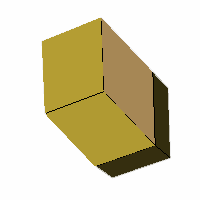 VRML, OFF VRML, OFF |
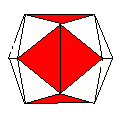 Axes: BCEF Symmetry: 2-fold dihedral Rhombi: (R,r) = (8,4) Compliment: ABCDFH Baer: (0,0,2,0,2) Axes: BCEF Symmetry: 2-fold dihedral Rhombi: (R,r) = (8,4) Compliment: ABCDFH Baer: (0,0,2,0,2) 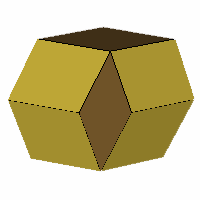 VRML, OFF VRML, OFF |
3 Axes
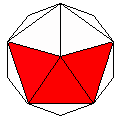 Axes: ABC Symmetry: 2-fold pyramidical Rhombi: (R,r) = (2,4) Compliment: ABCDEGH Baer: 'D' (0,0,0,1,0) Axes: ABC Symmetry: 2-fold pyramidical Rhombi: (R,r) = (2,4) Compliment: ABCDEGH Baer: 'D' (0,0,0,1,0) 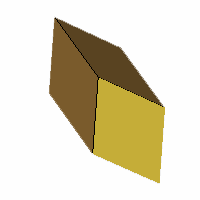 VRML, OFF VRML, OFF |
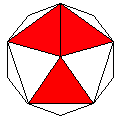 Axes: ACE Symmetry: 2-fold pyramidical Rhombi: (R,r) = (4,2) Compliment: ABCDFGH Baer: 'C' (0,0,1,0,0) Axes: ACE Symmetry: 2-fold pyramidical Rhombi: (R,r) = (4,2) Compliment: ABCDFGH Baer: 'C' (0,0,1,0,0) 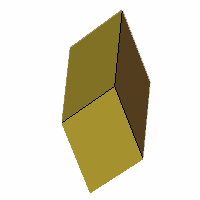 VRML, OFF VRML, OFF |
|---|---|
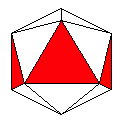 Axes: ADE Symmetry: 2-fold pyramidical Rhombi: (R,r) = (4,2) Compliment: ABCDEFH Baer: 'E' (0,0,0,0,1) Axes: ADE Symmetry: 2-fold pyramidical Rhombi: (R,r) = (4,2) Compliment: ABCDEFH Baer: 'E' (0,0,0,0,1) 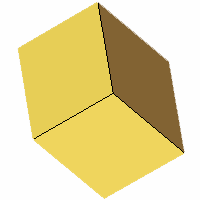 VRML, OFF VRML, OFF |
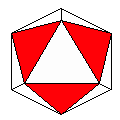 Axes: BCD Symmetry: 3-fold dihedral Rhombi: (R,r) = (6,0) Compliment: ABDEFGH Baer: 'A' (1,0,0,0,0) Axes: BCD Symmetry: 3-fold dihedral Rhombi: (R,r) = (6,0) Compliment: ABDEFGH Baer: 'A' (1,0,0,0,0) 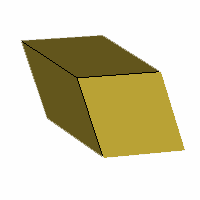 VRML, OFF VRML, OFF |
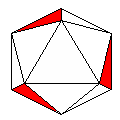 Axes: CDE Symmetry: 3-fold dihedral Rhombi: (R,r) = (6,0) Compliment: ABCDEFG Baer: 'B' (0,1,0,0,0) Axes: CDE Symmetry: 3-fold dihedral Rhombi: (R,r) = (6,0) Compliment: ABCDEFG Baer: 'B' (0,1,0,0,0) 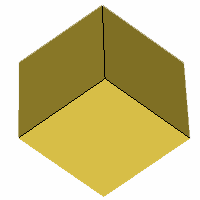 VRML, OFF VRML, OFF |
Rhombo-flexible cases.
For cases with more than 4 axes only two cases are rhombo-flexible:
- The 6-axis case BCDEFG (above) is rhombo-flexible, and is convex between limiting cases of R and r having acute angles of 90° and 0° (a frequency two cube) and 60° and 90° (a truncated octahedron) with the rhombic triacontahedron as an intermediate form.
- The 5-axis case BCDEF is also rhombo-flexible between the same limits with the rhombic icosahedron as an intermediate form. The animated VRML is linked here.
All 4-axis and 3-axis cases are rhombo-flexible.
Credits
My thanks to David Koski for providing information relating to Baer Cell construction and for his permission to republish his data.
References
[1] Baer, Steve, Zome Primer, Zomeworks, 1970.
